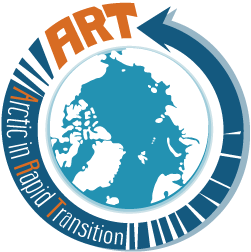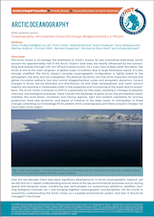|
|
|
ART Research Priorities
The Arctic in Rapid Transition (ART) network developed seven priority sheets of future Arctic marine and coastal research from an international early and mid career scientists’ perspective. The priority sheets are one of the ART network’s contributions to the ICARP III conference in Toyama, Japan in April 2015, fostering an improved understanding of the presently changing Arctic system as a whole in future Arctic research. The sheets are also distributed as printouts during the upcoming ASSW (http://www.assw2015.org/) and ICARP III (http://icarp.iasc.info/) meetings in Toyama, Japan; in particular during the ART session (session C2 on April 30), the APECS workshop (April 26), the poster session (April 29-30) as well as in the exhibition area. The seven ART priority sheets comprise perspectives on Physical Processes in Sea Ice, Arctic Land-Ocean Interactions, Paleoceanographic Time Series from the Arctic, Proxy Calibration and Verification, and Background information: The seven ART priority sheets are the product of the second international science workshop ISTAS (Integrating spatial and temporal scales in the changing Arctic System: towards future research priorities, https://istas.sciencesconf.org/) that was jointly organized in October 2014 by the Arctic in Rapid Transition (ART) network, the Association of Polar Early Career Scientists (APECS and APECS France), and the European Institute for Marine Studies (IUEM, Brest, France). During this workshop, future Arctic research priorities were discussed with regard to the natural variability of the Arctic marine and coastal systems over various spatial and temporal scales. One of the main priorities for future Arctic research includes the need to further interdisciplinary studies of the Arctic marine system in order to improve the knowledge on the modern and past Arctic Ocean’s physical dynamics, biogeochemical cycles and ecosystems, and thus to help predicting future scenarios in the high northern latitudes. |

 Arctic in Rapid Transition (ART) priority sheets of future Arctic marine and coastal research
Arctic in Rapid Transition (ART) priority sheets of future Arctic marine and coastal research
